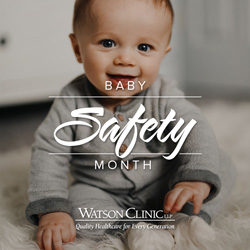
When it comes to the safety of an infant, you can't be too cautious. Whether you're a new parent, grandparent or close family friend, check out these tips for childproofing your home and ridding it of hidden hazards that might seriously injure babies or young kids.
Hide temptation. Naturally curious little ones will put almost anything into their mouths. Keep potential poisons (such as medicine, household cleaners and rubbing alcohol) out of reach—and, ideally, in a locked cabinet. And don't leave purses within grabbing distance. Chances are they contain choking hazards, like coins or medicine.
Hold off on hand-me-downs. Yes, it might seem sweet to tuck your grandbaby into the same crib your children slept in. But old baby furniture is risky. A crib that is more than a few years old, for example, won't meet today's safety standards. The same is likely true for playpens.
Set the stage for safe sleep. To protect against Sudden Infant Death Syndrome (SIDS), keep soft, cushiony objects—such as stuffed animals, bumper pads, pillows and blankets—out of cribs. And always put babies to sleep on their backs on a firm surface—not your bed.
Beware of bathroom dangers. Babies and toddlers can fall headfirst into toilets and drown. Play it safe and use toilet locks.
Fend off falls. Install gates at the top and bottom of each staircase. The gates at the top of stairs should be mounted with screws. But it's OK if those at the bottom are pressure mounted. And help keep adventurous climbers safe by moving chairs, cribs and other furniture away from windows.
Your Watson Clinic Pediatrician can help you anticipate other potential hazards around the house. Additional tips can also be found at www.safekids.org.
Sources: AARP; American Academy of Pediatrics; Safe Kids Worldwide